Before I begin this article, I would like to remind the audience that this issue isn’t exactly unique to Weiss Schwarz. Additionally, before I begin to analyze and breakdown the relationship, I would like to explain the concepts here. Deck uniqueness applies to a deck’s individuality; therefore, the unique cards used in that deck that differs from other decks. Universal versatility refers to ability of cards to be mixed into any kind of deck.
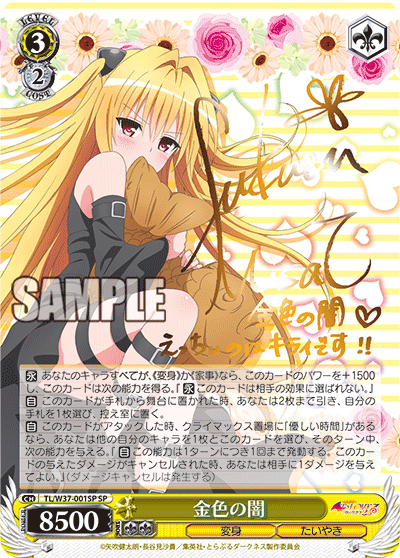
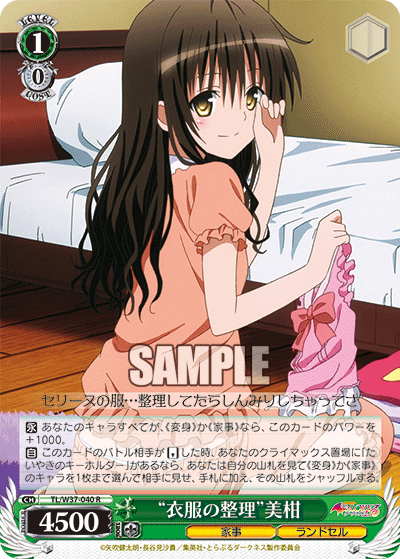
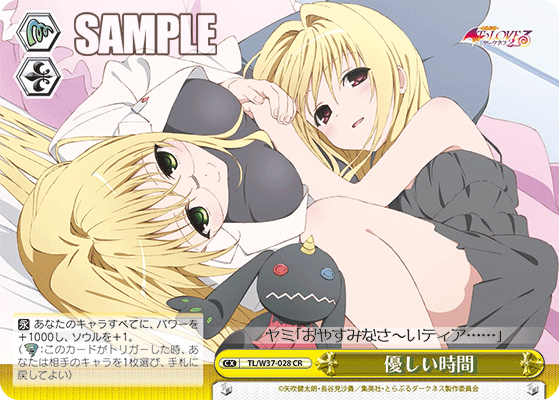
TL/W37-040R “衣服の整理”美柑 (center)
TL/W37-028CR 優しい時間 (right)
Although it may seem rather strange to new players, universal traits did not always exist. In older sets, cards could be divided from one another by trait, name, or colour. Even today, some decks still provide a distinction with having certain strict requirements on their ability texts. However, for the vast majority of modern decks within the last three or four years and even beyond, the game has long shifted into providing a single universal trait by which almost all cards in a set would be given.
This does come with its pros and cons. The existence of universal traits and the further use of these said traits in virtually almost every card in a set has opened up deck design to encompass almost all a set provides. Outside of a few exceptions, every card can be slotted into a deck with little to no complications, at least on the trait side of ability text. This allows for players to be more creative and flexible, letting players arrange their decks without any reservation or fear of restrictions.
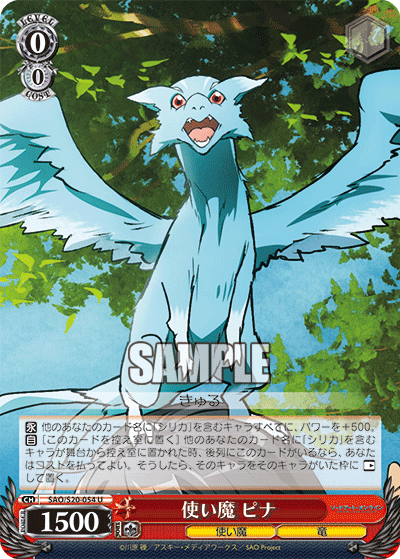
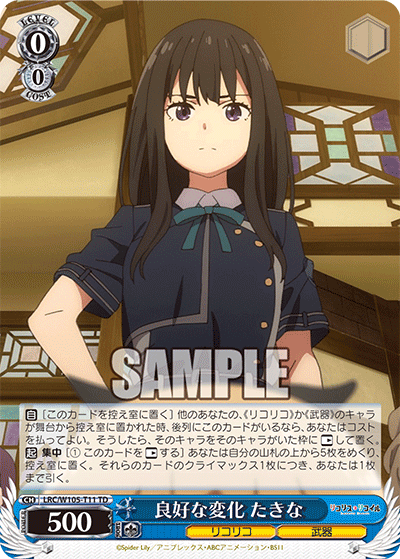
For instance, in the case of the Pina profile, aptly named for the original Pina, the card originally serviced only characters that carried the name of Silica [シリカ]. In the case of Takina, which carries the same effect of Pina, she services any character in the set as whole. One other sidenote to make is that of the difference in secondary abilities. Pina serves as a global assist for Silica while Takina serves as a brainstorm. While the focus of this article is not necessarily on the impact of powercreep, it must also be noted that more modern profiles also double up in utility. Whereas Pina can only really benefit decks that are focused on Silica, Takina can be essentially slotted into any deck. Additionally, Pina carries two traits that are considered off-traits to the set, making her more of a luxury to come across whereas Takina can be easily accessed by almost any card in her set.
Players are ultimately inclined to place the most powerful profiles in their set, especially profiles that provide cheap and free filter to add consistency to their decks. With the lack of any true restrictions, decks virtually just run the exact same cards.



TSK/S82-078U 沈着冷静 ソウエイ (center)
SFN/S108-071RR しっかり者の魔法使い フェルン (right)
The addition of modern profiles with generic costs and basic targets only add to the monogamous design of modern decks. Many of these cards being able to access cards for cheap costs that are also usually at level zero allow them to be placed into any deck without any worry or hassle. Some of the filters can virtually turn any card into something more malleable, upping consistency and transforming bricks in hand to higher valued cards. As such, many of these profiles are considered core staples of decks, cards that are set in stone with every deck design and occupying a requisite number of slots.
Now before we delve a little further into this post, I would like to remind the audience that there is nothing wrong with running staples. Many of the profiles considered to be staples often provide essential effects that are needed throughout the game such as milling and filtering. However, with the open card pool found in modern sets, this leads to the question of which staples should people be running.
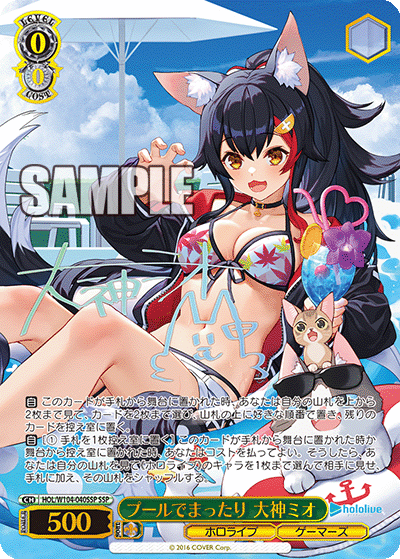
Within modern sets, more often than not, several versions of generic staple effects can be found on a variety of cards. However, additional abilities can differ depending on the cards themselves. Sometimes, a card can be overloaded with abilities to the point that it outshines any clones or variants of itself. Take the case of Mio from Hololive shown above. Mio is a drop search profile. There are multiple versions of a drop search profile in Hololive. Their costs may differ as do their power levels, but quintessentially, they all perform the same effect. However, if you were to find information about Hololive decks online, they will all be likely running at least a single copy of Mio over other drop searches. The reason for this is likely due to the overall power that Mio herself possesses compared to the other cards. By all means, I don’t think anyone would disagree if I were to call Mio overspecc’d. Mio has an on-play rearrange and/or surveil ability while also being a drop search on play and when sent to waiting room. Most cards are already pretty proud to carry any singular ability on Mio’s ability text. So why is it that Mio is so good? Mio by herself is already a great card, providing mill, information, and also being a filter twice. However, if you pair her up with cards that benefit from either getting cards in waiting room or for top check properties, like a Riko profile, Mio becomes increasingly more useful.

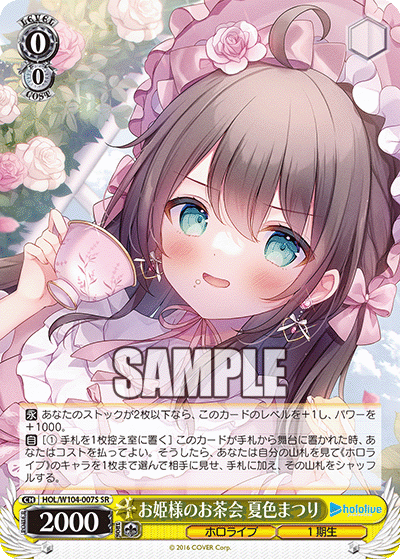
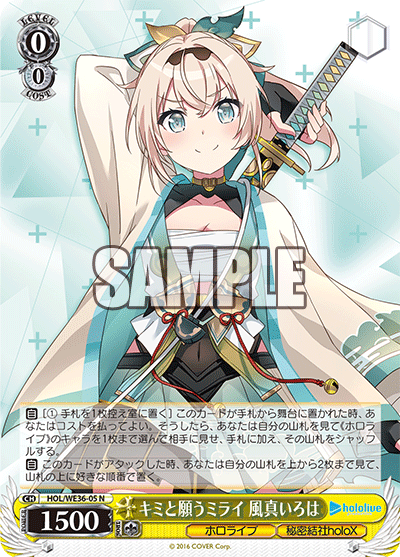
HOL/W104-007S-SR お姫様のお茶会 夏色まつり (center)
HOL/WE36-05N キミと願うミライ 風真いろは (right)
Does that mean that the other drop search profiles in the set are worthless in comparison? Well, that answer depends completely on you. Rather than looking at comparisons as superior or inferior to Mio, I’d rather consider the other profiles as parallels with their own individual strengths. First and foremost, the other profiles are already much larger than Mio’s base power. This gives them more power to beat over opposing cards while potentially staying on board. Miko is the largest profile, but she has a slight downside by giving your opponent’s cards a buff. Matsuri is a large beater as well, not as large as Miko, but she gains a level, making her immune to level zero reversers. Iroha doesn’t have much power, but she offers the ability for you to rearrange her triggers. All-in-all, each of the profile shown here carry their own upsides.
Fundamentally though, they all provide the same core utility of being a drop search profile. Depending on your own builds and needs, one may be more suited for you than the others. However, this is where complications begin to arise when you are dealing with more specified deck building. Thematic builds, like many of the ones shown on this site, may have certain restrictions that you want to be building within.
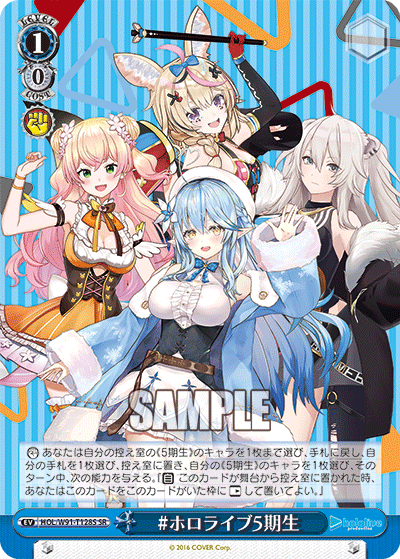
Take for instance this Hololive card above. This card specifically targets a Gen 5 (5寄生) character to grant its ability to. All the drop searches above in the previous section will fail its ability. However, if you were to run Polka’s drop search, she will fit the description needed and is a valid target for the ability. You can choose to run other drop searches, but they will not benefit from the ability that this card provides.
Ultimately, you can choose not to follow the provided theme or restrictions that a particular deck suggests. The decision is dependent on you. If you really want to, you can follow it partially. The success rate to trigger your abilities are solely dependent upon your gameplay decisions and deck-building.

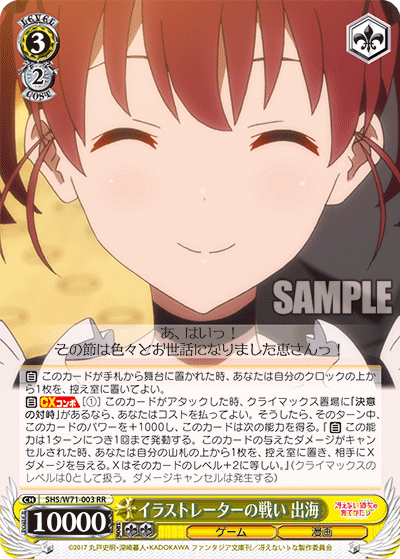

SHS/W71-003RR イラストレーターの戦い 出海 (center)
APO/S53-003RR “受け継ぐ祈り”ジーク (right)
I’ve been hearing for a long while now about the need to “solve” deck building for a series. The connotation of “solve” suggests that deck building is a problem to begin with. I’d like to impose an alternative idea of deck building as less of a problem and more of an open-ended question. The question is simply: What strategy would you like to use to achieve success? I don’t believe that there is a single solution for a series. I won’t skip over the harsh reality. Some strategies are just more powerful than others. The utility they have, the card pool they have, etc., give them a larger advantage over others. I cannot deny that. However, at the end of the day, this game is exactly as described, a game. You choose how you wish to play and achieve fun.
Often with the older folks, including myself, we tend to revisit the idea that old archetype decks felt pretty awful due to lack of power and poor filtering profiles. Unfortunately, that is the bitter truth. However, it’s been a decade since I started this game, and I can assure all of you, including my fellow retirement fellows, that the game has changed dramatically. At this point in time, many modern decks have quite a few options for their own specialized theme or archetype decks. Long gone are the days of having either a partially functional theme deck or having a small pool of limited options. As the game continues to grow and expand, and given Bushiroad’s track record of supplying small amounts of additional support to previous old combos and ideas, the newer archetype decks aren’t horrible at all.
Personally, I feel as if the opening of global traits has made it far too easy to assemble a singular BiS (best in slot) or “best” build. However, I will acknowledge that it has also opened more options for many decks as well. Ironically enough, I do believe that restrictions in a way can open up more flexibility and creativity in design. The rationale for this is that players must find ways to play around restrictions and make use of what the smaller card pool offers to achieve their goals. I think that is where a player’s true flexibility and creativity shows.
I am under no authority to decide for you how in which you should build your decks. For our site here, our vision is to create deck profiles that focus on specific aspects of a series. We want to highlight different strategies and fun ideas and build towards those accordingly. Our choices are to optimize said decks, looking to play parallel versions of profiles rather than enforcing particular staples. Ultimately, you determine what and how you wish to play.